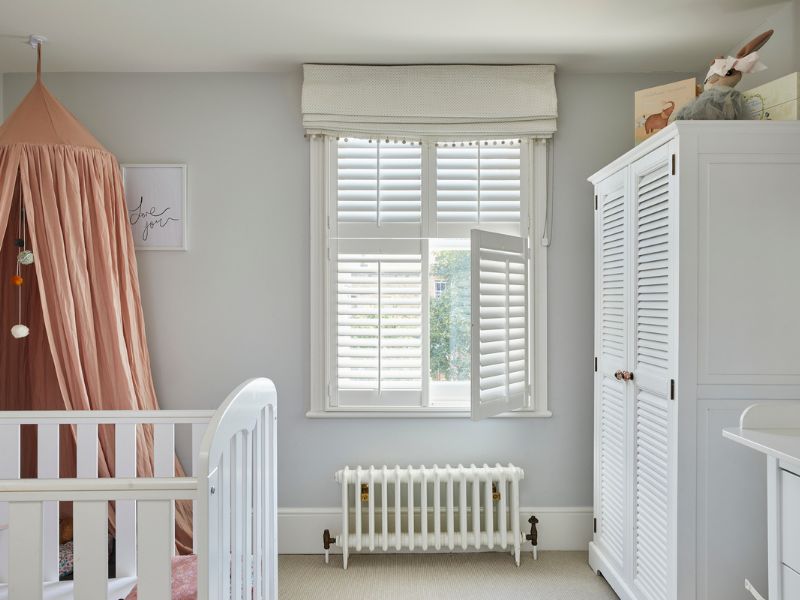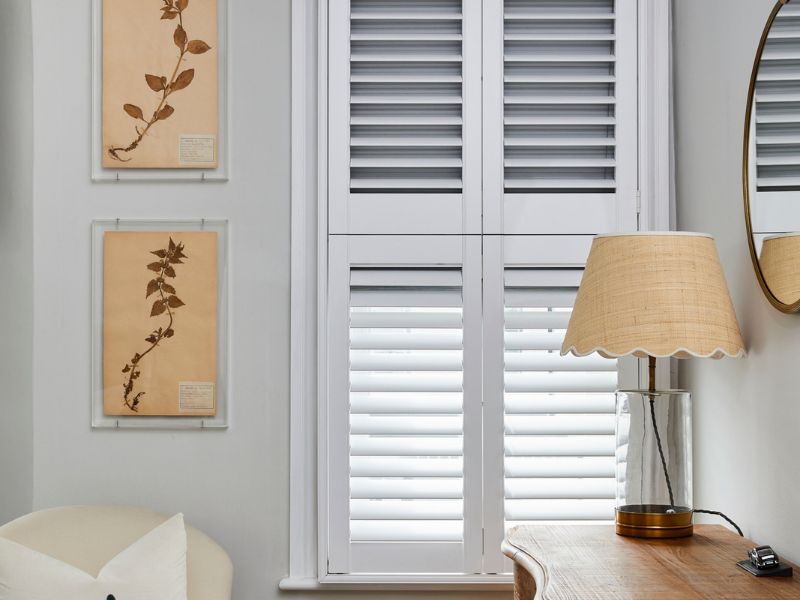Heat Saving in the Home during Winter! Posted on 3 Nov 16:50 , 0 comments
How Plantation Shutters can make your home become more energy efficient
None of us are strangers to the increasing energy bills and the cost of living crisis that has a heavy focus in current news. It therefore is a time when we all need to be looking at how we may be able to reduce spend in certain areas within our homes and our living costs. How can we make our home, or our work place, become more energy efficient? Are there changes that can be made within our homes or offices that will improve our energy bills? Now that the clocks have changed, with the shorter days, darker evenings and colder winter months ahead of us, we are needing to consider how can we keep the heat in and the cold out!
Windows and Doors are an obvious area to have your focus drawn to. They are sometimes expansive, large glass areas where heat can escape and drafts can come in through ill fitted frames. It is because of this that window dressings are a key factor in keeping your home well insulated. This is not just hearsay but a fact, so much so that there is evidence that window coverings can conserve and reduce energy loss through the windows, which will of course significantly reduce your heating bills and keep you warmer during the winter months.

There are many official bodies that have done strenuous research on this and we have found some helpful findings. The energy.gov website and the British Blind and Shutter Association (BBSA) provide interesting discoveries on the enhancements that can be made with window coverings. According to the BBSA “solar shading is a proven, passive energy saving solution which also provides a whole host of other benefits”. It is clear from these results that Shutters and blinds are a brilliant and easy way to improve energy efficiency in your home.
How will Shutters and Blinds assist me on my energy saving journey?
To fully enhance the energy-efficient benefits of shutters, keep them open in the winter months when the sun is out during the day, this will allow the room to build up and retain the heat from the sun. Then once the sun goes down, close your shutters fully so that they act as a block to heat loss and help hold in the warmth. Although this seems like an obvious thing to do, it is something that many of us will forget, particularly in parts of the house we aren’t regularly using.
The other benefit is that plantation shutters work for you with being energy efficient year round, they will reduce heat loss in the winter months but reduce heat gain in the summer. Plantation Shutters are excellent insulators and will trap the cold air between your shutter and the window.

If you are weighing up the pros and cons of which window coverings to use in your home, then you should consider that a huge advantage of plantation shutters over curtains and blinds is the huge flexibility that the louvres provide, where as with curtains or blinds they have to be fully drawn or open, shutters have the ability to be adjusted to the light / thermal requirements you desire. A study by The English Heritage found that when the shutter panels and louvres are fully closed they can reduce the heat lost through a window by in excess of 50%, and this figure can be further enhanced with secondary window glazing to over 60%!
When choosing the best window dressing for your home it is worth thinking about how and when you will be using the room. For example in the winter months, particularly if you are looking at a window in a room you use during the day, you will be wanting to get the balance between reducing heat loss but also ensuring natural lighting, otherwise with fully closed window dressings, additional energy costs (for lighting) would be required. For example, a solid wooden shutter gives a fantastic insulation, but you can't keep it closed all the time, or you'll need your lights on. This would be the case for curtains too. Whereas a louvred plantation shutter blind would provide you the flexibility to filter light in during the day.
What other options are there for me to consider aside from shutters or along with shutters?
For even more improved insulation and heat loss saving, you could look at having integrated black out blinds neatly installed or retrofitted behind your shutters or curtains. These cellular black out blinds, known as Honeycomb Blinds have a unique smart cellular pleated design. The honeycomb cells provide an exceptional insulation barrier, preserving the heat in your room during the winter months. The double-walled honeycomb structure makes the blind fabric extremely strong, durable and flexible. Therefore with a combination of these Honeycomb blinds and interior plantation shutters it ensures you are maximising on the energy saving.

If plantation shutters aren’t what you are after but you like the sound of what cellular blind can offer you then that’s fine! Honeycomb blinds (cellular blinds) are also an excellent standalone product! Or you can add them as a blind to go behind an existing window dressing that you have in place, such as curtains or roman blinds. Honeycomb blinds will provide you with a highly affordable and practical solution for additional insulation and as an added bonus darkness too. Depending on the light levels you are looking for, our honeycomb blinds come in sheer, light filtering and room darkening.

We have many different shutter and blind options for you to consider in your home insulation journey, so if you would like further information or guidance on what product may be best for your windows then please do get in touch with our team who can chat to you further or organise a free site survey.